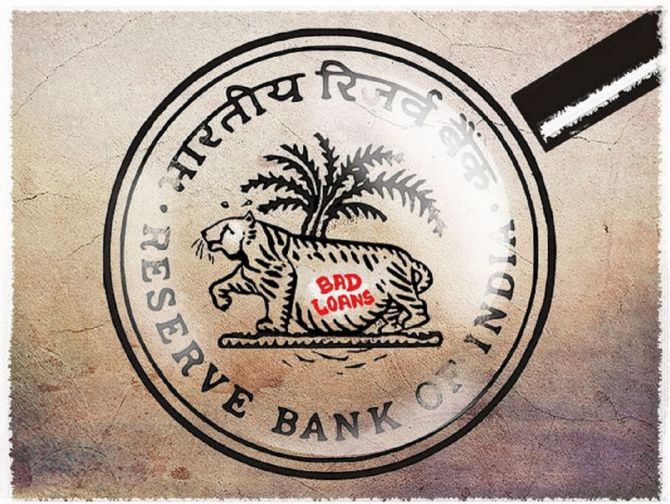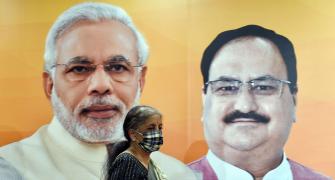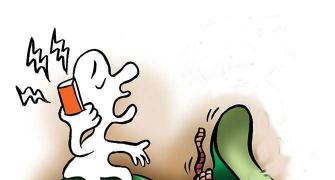About 50 per cent of the accounts that availed of the EMI moratorium amid the pandemic, which made things worse in an already slowing economy, are expected to be restructured, and of these accounts that would undergo restructuring, one-third, or Rs 6-9 trillion, could turn into NPAs.
Experts, barring rating agencies, expect a sharp jump in non-performing assets (NPAs) of banks in the current financial year (FY21) as individuals and businesses, hit hard by the economic fallout from the Covid-19 pandemic, start to default.
About 50 per cent of the accounts that availed of the EMI moratorium amid the pandemic, which made things worse in an already slowing economy, are expected to be restructured, said former financial services secretary R Gopalan.
Of these accounts that would undergo restructuring, one-third, or Rs 6-9 trillion, would turn into NPAs, he said.
D K Mittal, also a former financial services secretary, estimated gross NPAs, or GNPA, of banks to be 12-15 per cent of total advances.
Former finance secretary Subhash Chandra Garg expected bad loans to rise to Rs 9-10 trillion, saying restructuring doesn't remove the fundamental nature of soured assets.
Relief measures
To provide relief to borrowers amid Covid-19, the Reserve Bank of India (RBI) had announced a moratorium that allowed borrowers to defer their EMIs without being classified as NPAs.
The moratorium ended on August 31, but the Supreme Court (SC), hearing a bunch of petitions on loan moratorium, has ordered that no accounts should be classified as NPAs until further orders.
The RBI also announced a scheme to restructure loan accounts that were in default for not more than 30 days as of March 1, 2020. Under this, individuals and corporate borrowers were allowed to invoke the resolution framework by submitting requests to banks till December 31, 2020.
The government, to do its share to help borrowers, decided to suspend insolvency and bankruptcy proceedings for a year.
However, Gopalan said the suspension of both the Insolvency and Bankruptcy Code (IBC) and recognition of NPAs is a "disservice done to the banking sector".
Currently there is no transparency as banks are not declaring data on loans that can default, making it difficult to assess the health of the banking system, said Mittal.
The RBI should ask banks to report data on borrowers who would default once the SC's ban on NPA recognition is lifted. This would ensure there is no shock to the system once the ban is lifted, he said, adding that it would help policymakers decide where measures should be aimed at.
Conservative estimates
Ratings agencies such as ICRA and CRISIL have conservative estimates, and expect clarity to emerge once information on restructured loans is available.
GNPAs of the banking system were 9.1 per cent as of March 2019 and reduced to 8.5 per cent of the advances in March 2020, largely due to improved recoveries through IBC and lower fresh slippages.
The reducing trend in GNPAs would have continued if Covid-19 had not happened.
The pandemic will have a double-edged impact of slowing credit growth and increasing fresh slippages, said Krishnan Sitaraman, senior director at CRISIL Ratings.
GNPAs were expected to increase to around 11-11.5 per cent as of March 2021 without factoring in the loan restructuring scheme, he said.
The RBI, in its financial stability report, released in July, saw Covid-19 pushing the GNPA ratio of all banks to their highest level in nearly two decades to 12.5 per cent. The report had said that if the macroeconomic environment worsens further, the ratio may escalate to 14.7 per cent under the very severely stressed scenario.
Situation at PSBs
Public sector banks' (PSBs') GNPA could rise to Rs 8.6-9 trillion as against Rs 7.2 trillion as of March 2020, according to Anil Gupta, vice president-financial sector ratings at ICRA.
This could have been more if the government's credit guarantee scheme and the restructuring plan for borrowers were not in place, said Gupta.
Many banks are already reporting higher early delinquency data reflecting build-up of stress in the system, said Prakash Agarwal, head of banking and financial institution ratings at India Ratings & Research.
In the absence of sustained improvement in the economic activity, it is reasonable to believe that some of these would start reflecting in the NPA data of banks in subsequent quarters, he added.
Retail credit delinquencies for PSBs are 5 per cent of the loans sanctioned that are past 30 days' due, and 2.8 per cent of the loans were due past 90 days as of August 2020, according to the data by CIBIL.
Although slippages are expected to rise, PSBs would be able to absorb a large portion of fresh NPA provisioning from their operating profits, said ICRA's Gupta.
PSBs' operating profit along with the proposed capital infusion of Rs 20,000 crore would suffice their capital requirements for FY21, he said.










